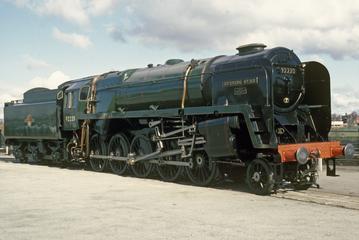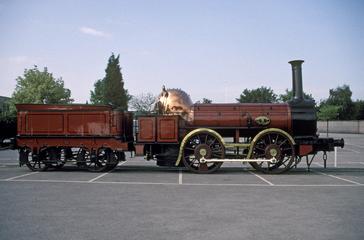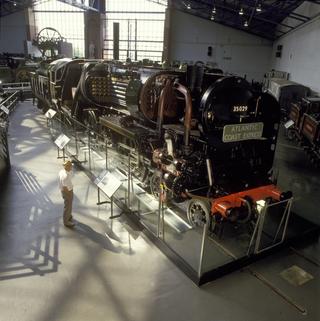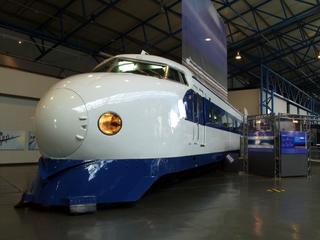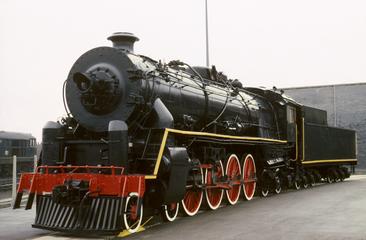
London Brighton & South Coast Railway locomotive Boxhill
- Made:
- 1880 in Brighton railway works
- designer:
- William Stroudley

Steam locomotive, London Brighton & South Coast Railway, 0-6-0T No 82, "Boxhill", designed by William Stroudley, built at Brighton in 1880, withdrawn in 1946.
The 50 locomotives of the A1 class were built between 1872 and 1880 for the London, Brighton & South Coast Railway’s suburban and cross-London services. Their designer, William Stroudley, had inherited locomotives unsuited to the task of meeting a 35-minute schedule on the South London Line between Victoria and London Bridge stations. This 8½-mile route was notorious for its ten intermediate stops and steep gradients. Furthermore, poor quality track restricted overall weight, while the cross-London route passed beneath the Thames through Rotherhithe Tunnel.
To meet these challenges, Stroudley developed a small 0-6-0T (T denoting a side-tank locomotive with water tanks mounted either side of the boiler) design for economy of working over short distances and evenly distributed weight to ensure all wheels had good adhesion. This was essential as demanding point-to-point schedules required rapid acceleration from standing starts, and steam, as well as hand braking was provided. To get water into the boiler, Stroudley used mechanical pre-heated feedwater pump injectors instead of steam injectors. This was intended to achieve fuel economy while reducing boiler stresses. Preheating was achieved by directing some exhaust steam into the tanks through condensing pipes.
The first six locomotives emerged in 1872, their success resulting in another 44 being built. They were worked hard, earning the nicknames ‘Rooters’ and ‘Terriers’. Modifications made by Stroudley included air braking, while his successors gradually exchanged the pumps for steam injectors and removed the condensers. With heavier trains needed to cope with passenger demand, several ‘Terriers’ were allocated to other duties, and withdrawals began as early as 1898. From 1905, 22 were converted for branch line ‘motor train’ use – locomotive-hauled trains that could be driven from either end – by Douglas Marsh. From 1911, 22 were given new boilers and reclassified A1X. Absorbed by the Southern Railway in 1923, 15 'Terriers' were inherited by British Railways in 1948, the last being withdrawn in November 1963.
No 82 Boxhill is one of the final 1880 batch and remained in A1 configuration throughout its career. It was one of two converted to a 2-4-0T locomotive in 1905 for use on motor trains. Returned to 0-6-0 configuration in 1913, No 82 became shed pilot at Brighton until withdrawal and was restored close to original Stroudley condition, complete with condensing pipes, in 1947.
Details
- Category:
- Locomotives and Rolling Stock
- Object Number:
- 1975-7012
- type:
- steam locomotive
- credit:
- British Rail, Clapham
